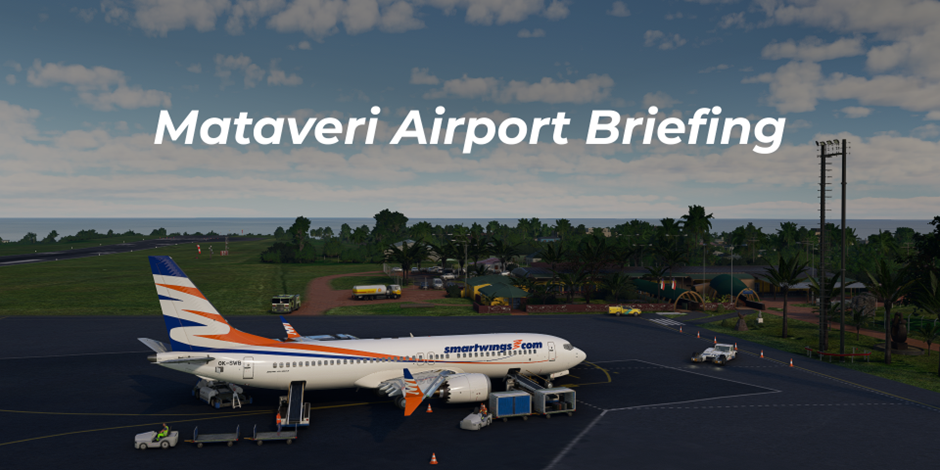¶ Mataveri Airport
The information in this document is not intended for real aviation. It is only intended for computer-based flight simulation.

Mataveri International Airport (SCIP/IPC) is located on Easter Island in the Pacific Ocean. It is the most remote airport in the world: the nearest airport is located a few hours' flight away. This airport appears regularly in our flight schedule as part of round-the-world trips for travel agencies.
This document summarizes essential information you should know for a realistic flight simulator experience.
For more information, please refer to the real-life Aeronautical Information Publication (AIP):
https://aipchile.dgac.gob.cl/aip/
¶ Scenery
Recommended SCIP scenery for MSFS:
ORBX - payware
timot75 - freeware
Recommended SCIP scenery for X-Plane:
X-Plane Scenery Gateway - freeware
Recommended SCIP scenery for P3D/FSX:
Flightsimdesign Chile - payware
AVSIM Library - freeware
¶ Flight Planning
Mataveri Airport is considered an isolated airfield, which means that there is no alternate airport in its vicinity to divert to if needed. It is only possible to depart for the flight if the weather at the destination is satisfactory, and also if there are no other aircraft in the air in the critical area.
The nearest airports from Mataveri (SCIP) are:
- Totegegie (NTGJ), distance 1402 NM;
- Santiago (SCEL), distance 2025 NM;
- Papeete (NTAA), distance 2293 NM.
It is not possible to reach any other airport in less than 3 hours. It is therefore necessary to define a so-called Point of No Return (PNR) – after passing this point it is no longer possible to turn back, and there is no other option but to continue the flight to Easter Island. The location of this point will depend primarily on the amount of fuel on board.
The flight to and from here should also be planned according to ETOPS rules. Remember to turn on the APU before entering the ETOPS area (which starts above 60 minutes flight time from the nearest airport), but ideally, start it before departure. Also keep the APU consumption in mind when planning the fuel - but either way, considering the airport characteristics, it is recommended to fill the aircraft up with the maximum amount of fuel possible.
We recommend marking the ETOPS area with circles centered on your suitable airports (in this case SCIP and your departure airport). In the B737, use the FIX page in the FMS to do this. The diameter of the circle should correspond to one hour of flight time (this depends on the wind, but usually around 420 NM). Once you depart this circle, you are in the ETOPS area.
¶ Arrival
The dimensions of the runway are 3300 x 45 metres. ILS approach is available for runway 10. You can also use RNP or VOR approaches for both runway directions.
The glide slope angle for runway 10 is 2.5° (less than the usual 3°).
180° turns on the runway are only allowed at the ends of the runway, or on a turning area located approximately 1970 meters from the runway 10 threshold.
The commercial apron is located on the north side of the runway, near Runway 10 threshold. A very similar apron is located opposite (on the south side of the runway), but this is for military use only.
Use extra caution when taxiing. The apron dimensions are quite limited.
¶ Departure
Your flight from here will always pass through an ETOPS area. The APU should be switched on for the entire duration of the ETOPS area, but should ideally be started before departure.
Use extra caution when taxiing. The apron dimensions are quite limited. Taxiway C is the preferred exit from the apron.
Intersection departure is prohibited for aircraft of Boeing 737 size (and larger) here. The full length of the runway must be used.